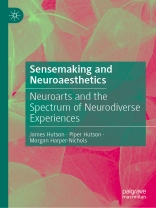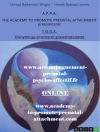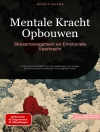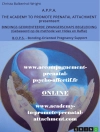This book investigates the complex interrelationships between neuroscience, arts, technical design, and the spectrum of neurodivergent conditions, introducing the emerging topic of neuroarts. It emphasizes the power of art and technologies as a multisensory tool for helping neurodivergent individuals discover their sensory preferences, and for neurotypical individuals to broaden their understanding of the world by simulating different sensory experiences. Drawing on the enactivism theory, which posits that cognitive processes are inherently shaped through the dynamic interplay between an organism and its environmental context, the authors discuss the applications of emerging technologies and propose a new theory to discuss and identify ‘neurotribes’ based on their relation to sense making or the body.
A timely and well-needed resource for scholars in the fields of neuroaesthetics and neurodiversity, as well as art therapists, clinical psychologists, and medical practitioners specializing in neurodiversity and sensory perception disorders, this book can also serve cultural institutions developing inclusive experiences for a neurodiverse public, and professionals in the tech industry focusing on AI, augmented reality, and sensory technology.
İçerik tablosu
Part I: Foundations.- Chapter 1. Introduction: The Nexus of Neuroarts, Neuroscience, and Technology.- Part II: Understanding Sensory Experiences.- Chapter 2. Integrating Sensory Modalities and Technologies in Artistic Contexts.- Part III: Toward Personalization.- Chapter 3. Sensory Profiles and Technological Deficits: Classification, Relevance, and Gaps.- Chapter 4. Diagnostics in Neurotribe Identification: Case Studies.- Part IV: The Future of Neuro Arts.- Chapter 5. Conclusion: Future Applications, Technologies, and Directions.
Yazar hakkında
James Hutson is Professor of Art History and Visual Culture at Lindenwood University (USA). He specializes in multidisciplinary research that encompasses artificial intelligence, neurohumanities, neurodiversity, immersive realities, and the gamification of education. His scholarly portfolio includes several books on the application of artificial intelligence in education and cultural heritage, including Inclusive Smart Museums (Palgrave Mc Millan, 2024).
Piper Hutson is an art curator and instructor with over sixteen years of experience in galleries across the United States. Her expertise lies in 19th-century British art, art education, and inclusivity in cultural heritage collections for neurodiverse populations, and she currently serves as both a Corporate Art Curator for Wells Fargo and an instructor in higher education at Lindenwood University (USA).
Morgan Harper-Nichols is an Atlanta, GA-based neurodivergent artist (autistic/ADHD/sensory processing disorder), with a client roster that includes Google, Meta, Apple, Adobe, and Starbucks. She is currently pursuing an MFA in Interdisciplinary Media Arts at Lindenwood University, where she studies interactive art and games, AI, as well as the intersection of neurodiversity, art, and its impact at a sensory level. Committed to mental well-being, accessibility, and a deeper understanding of neurodiversity in the arts, her aim is to create engaging, sensory-inclusive interactive experiences and contribute to interdisciplinary media arts education.












